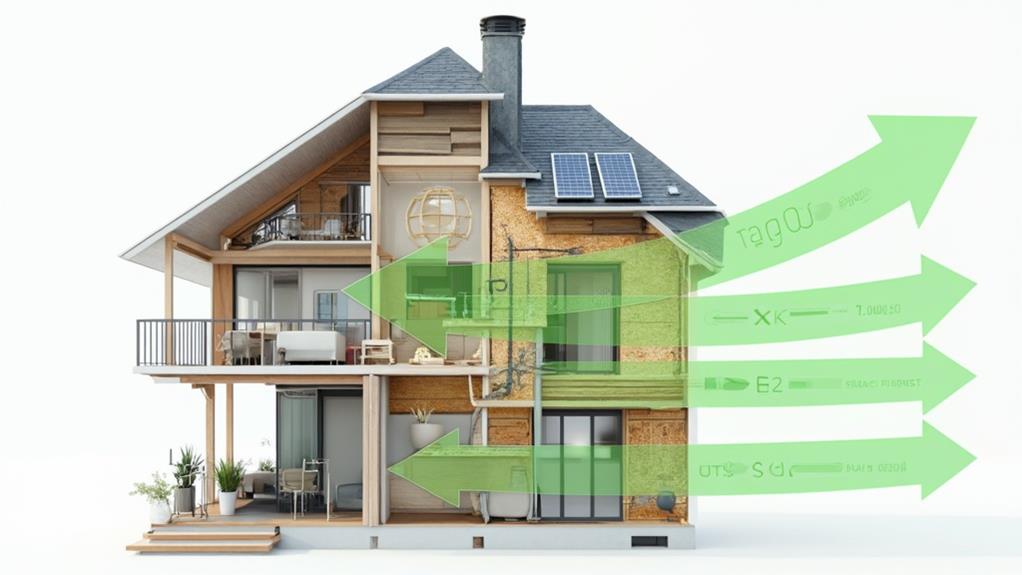Energy efficiency plays a crucial role in long-term renovation budgeting by balancing initial costs with future savings. While energy-efficient upgrades often require higher upfront investments, they lead to reduced energy consumption and lower utility bills over time. Key renovations include improving insulation, upgrading HVAC systems, and installing energy-efficient windows and appliances. The return on investment (ROI) varies based on factors like local energy costs and climate. Government incentives and rebates can offset initial expenses, making energy-efficient renovations more financially attractive. Additionally, these improvements enhance property value and appeal to environmentally conscious buyers. Understanding the full scope of energy efficiency's impact can significantly influence renovation decisions.
Understanding Energy Efficiency Basics
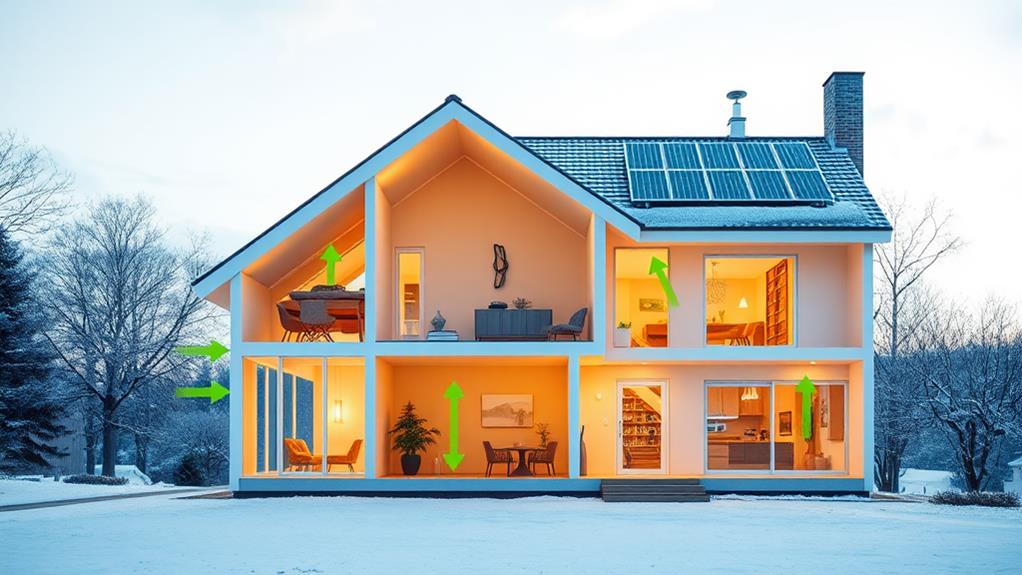
To comprehend energy efficiency in renovation budgeting, one must first grasp the fundamental principles of energy efficiency. Energy efficiency refers to the practice of using less energy to perform the same task or produce the same result.
In the context of building renovations, it involves implementing measures that reduce energy consumption while maintaining or improving comfort and functionality.
Key concepts include insulation, which minimizes heat transfer between indoor and outdoor environments; air sealing, which prevents unwanted air infiltration; and efficient HVAC systems, which optimize heating and cooling processes. Additionally, energy-efficient lighting, appliances, and smart home technologies contribute to overall efficiency.
Understanding these basics allows property owners to identify areas for improvement and prioritize investments. Energy audits can provide valuable insights into a building's current performance and potential savings. By analyzing energy consumption patterns, thermal imaging, and equipment efficiency, auditors can recommend targeted upgrades.
Familiarity with energy efficiency ratings, such as ENERGY STAR for appliances or HERS Index for homes, enables informed decision-making when selecting products or setting renovation goals. This knowledge forms the foundation for effective long-term renovation budgeting strategies focused on energy efficiency.
Initial Costs vs. Long-Term Savings
With a solid understanding of energy efficiency basics, homeowners and property managers can now evaluate the financial implications of energy-efficient renovations. The initial costs of implementing energy-efficient solutions are often higher than traditional alternatives. However, these upfront expenses must be weighed against the long-term savings they generate.
Energy-efficient upgrades, such as high-performance insulation, LED lighting, and smart thermostats, typically require a larger initial investment. However, they lead to reduced energy consumption and lower utility bills over time. The payback period for these investments varies depending on factors like local energy costs, climate, and the specific technologies implemented.
To accurately assess the financial benefits, it's crucial to calculate the projected energy savings over the expected lifespan of the upgrades. This analysis should include potential increases in energy costs and the durability of the installed systems. Additionally, property owners should consider government incentives, tax credits, and rebates that can offset initial costs.
While the upfront expenses may seem daunting, energy-efficient renovations often result in significant long-term savings, improved comfort, and increased property value. Careful budgeting and financial planning can help balance these factors and maximize the return on investment.
Key Energy-Efficient Renovation Upgrades
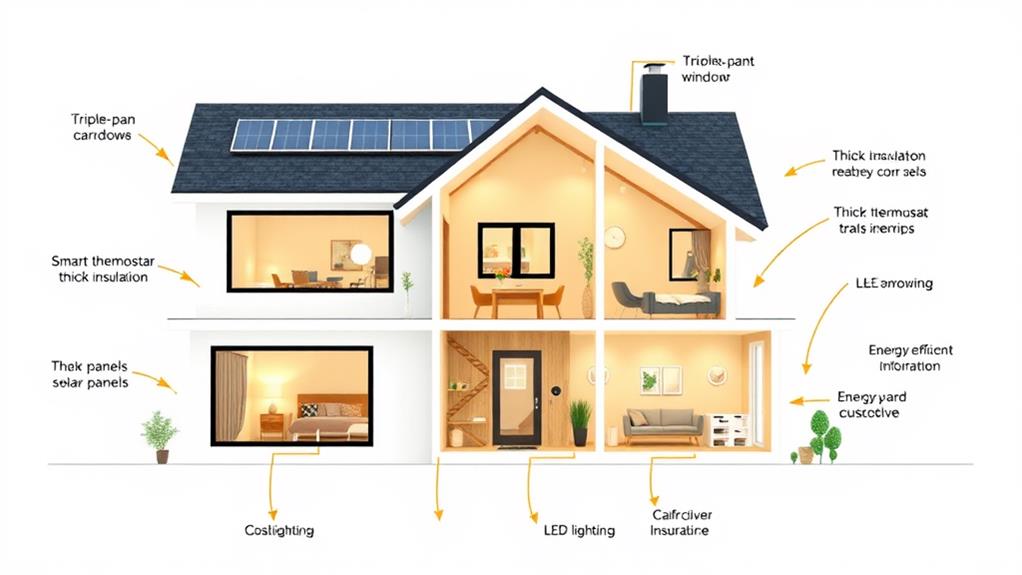
Several key energy-efficient renovation upgrades can significantly impact a property's energy consumption and overall performance. Insulation improvements, including attic, wall, and floor insulation, are crucial for maintaining optimal indoor temperatures and reducing heating and cooling costs. Upgrading to energy-efficient windows and doors helps minimize heat transfer and air leakage, further enhancing the building's thermal envelope.
HVAC system upgrades, such as installing high-efficiency furnaces, air conditioners, and heat pumps, can dramatically reduce energy consumption. Smart thermostats and zoning systems optimize temperature control and energy use.
LED lighting retrofits and the incorporation of natural daylighting strategies can substantially decrease electricity usage. Water-saving fixtures, such as low-flow faucets and dual-flush toilets, contribute to both energy and water conservation.
Renewable energy systems, like solar panels or geothermal heat pumps, can provide long-term energy savings and potentially generate excess power. Energy-efficient appliances and smart home technologies further reduce energy consumption. Implementing these upgrades not only improves a property's energy performance but also enhances comfort, increases property value, and contributes to environmental sustainability.
Calculating Return on Investment
Calculating the return on investment (ROI) for energy-efficient renovations is a critical step in the budgeting process. To determine ROI, homeowners must consider both the upfront costs of upgrades and the potential long-term savings on energy bills. This calculation involves estimating the annual energy savings, factoring in local utility rates, and projecting these savings over the expected lifespan of the improvements.
For example, replacing old windows with energy-efficient models may cost $10,000 but save $500 annually on heating and cooling expenses. With a 20-year lifespan, the total savings would be $10,000, resulting in a break-even point after 20 years. However, this doesn't account for increased home value or potential energy price increases, which could improve the ROI.
It's essential to prioritize renovations based on their ROI. Insulation and air sealing often provide the highest returns, followed by HVAC upgrades and window replacements. Homeowners should also consider available tax incentives and rebates, which can significantly reduce upfront costs and improve ROI. By carefully calculating and comparing the ROI of different energy-efficient upgrades, homeowners can make informed decisions that balance immediate costs with long-term financial benefits.
Government Incentives and Rebates
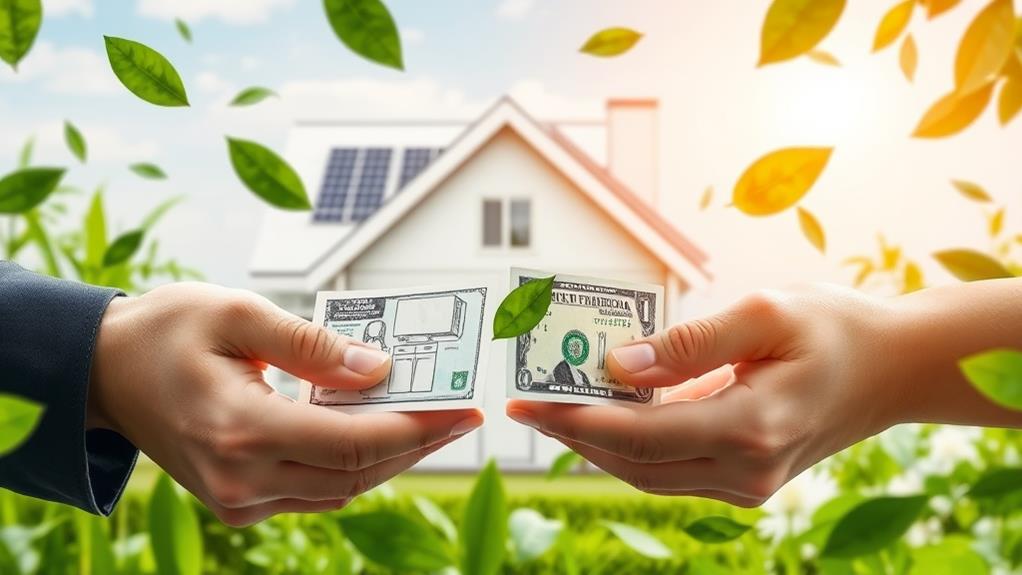
How can homeowners leverage government support to make energy-efficient renovations more affordable? Many governments offer incentives and rebates to encourage energy-efficient home improvements. These programs can significantly reduce the upfront costs of renovations, making them more accessible to a broader range of homeowners.
Federal tax credits often apply to energy-efficient upgrades, such as installing solar panels, upgrading HVAC systems, or improving insulation. These credits can offset a percentage of the renovation costs, directly reducing the homeowner's tax liability.
State and local governments may offer additional rebates or grants for specific energy-saving measures, like replacing old appliances with Energy Star-certified models or installing smart thermostats.
Utility companies frequently provide rebates for energy-efficient upgrades, sometimes offering instant discounts on purchases or cash back after installation. To maximize these benefits, homeowners should research available programs in their area and coordinate renovations to align with current offers.
It's essential to keep detailed records of all upgrades and associated costs to ensure eligibility for these incentives. By strategically leveraging these government and utility-sponsored programs, homeowners can substantially reduce the financial burden of energy-efficient renovations.
Sustainability and Property Value
Increasingly, sustainability features in homes are becoming a significant factor in property valuation. Energy-efficient renovations not only reduce operating costs but also enhance a property's market value. Studies have shown that homes with green certifications and energy-saving features command higher prices and sell faster than their conventional counterparts.
Sustainability improvements, such as solar panels, high-efficiency HVAC systems, and smart home technology, can significantly boost a property's appeal to environmentally conscious buyers. These features often translate to lower utility bills and reduced carbon footprints, which are increasingly prioritized by homeowners and investors alike.
Moreover, as governments worldwide implement stricter energy efficiency standards and regulations, properties that already meet or exceed these requirements are likely to maintain their value better over time. This trend is particularly evident in urban areas where sustainability is a key consideration in urban planning and development.
Real estate professionals are adapting to this shift by incorporating energy efficiency ratings and sustainability features into property listings and appraisals. As a result, homeowners who invest in energy-efficient renovations can expect to see a return on their investment through increased property value and marketability.
Financing Energy-Efficient Renovations
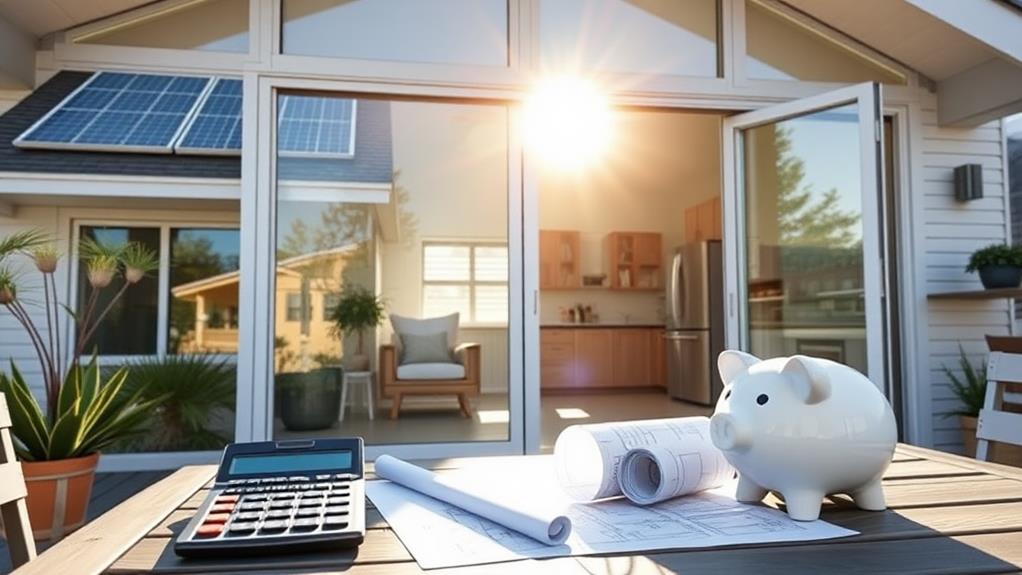
While energy-efficient renovations offer long-term savings and increased property value, the initial costs can be substantial. Homeowners and property managers often face challenges in financing these upgrades. However, several options exist to make energy-efficient renovations more accessible and affordable.
Government-backed programs, such as the Property Assessed Clean Energy (PACE) financing, allow property owners to fund energy improvements through property tax assessments. This option spreads costs over an extended period, typically 15-20 years. Energy-efficient mortgages (EEMs) enable homeowners to finance energy-saving improvements as part of their mortgage, often with more favorable terms than traditional loans.
Many utility companies offer rebates or low-interest loans for energy-efficient upgrades, reducing upfront costs. Additionally, federal and state tax incentives can offset renovation expenses through credits or deductions. Some financial institutions now offer green loans or lines of credit specifically designed for eco-friendly home improvements, often with competitive interest rates.
For commercial properties, energy service companies (ESCOs) may provide performance contracts, where the ESCO finances and implements energy-saving measures, then recoups costs through the resulting energy savings over time. This approach minimizes upfront capital requirements while ensuring energy efficiency goals are met.
Frequently Asked Questions
How Does Energy Efficiency Impact Indoor Air Quality and Occupant Health?
Energy efficiency measures can significantly improve indoor air quality by reducing pollutants, controlling humidity, and enhancing ventilation. This leads to better occupant health, reducing respiratory issues, allergies, and other health problems associated with poor indoor environments.
What Are the Best Energy-Efficient Solutions for Historic or Heritage Buildings?
Energy-efficient solutions for historic buildings include improving insulation, upgrading HVAC systems, installing energy-efficient lighting, and implementing smart building controls. These measures can be combined with careful restoration techniques to preserve architectural integrity while enhancing energy performance.
How Do Smart Home Technologies Integrate With Energy-Efficient Renovation Projects?
Like a conductor orchestrating a symphony, smart home technologies harmonize with energy-efficient renovations. These systems integrate seamlessly, optimizing HVAC, lighting, and appliances through automated controls and real-time monitoring, resulting in significant energy savings and improved comfort for homeowners.
Can Energy-Efficient Renovations Affect Insurance Premiums for Residential or Commercial Properties?
Energy-efficient renovations can indeed impact insurance premiums for both residential and commercial properties. Insurers may offer discounts for improvements that reduce risk, such as upgraded electrical systems, impact-resistant windows, or enhanced fire protection measures.
What Are the Potential Drawbacks or Limitations of Pursuing Energy Efficiency in Renovations?
Potential pitfalls of pursuing energy efficiency in renovations include:
- Costly capital commitments initially
- Disruption during implementation
- Longer payback periods than anticipated
- Limited effectiveness in older structures
- Potential performance gaps between projected and actual savings
Conclusion
Energy efficiency stands as a beacon of financial wisdom in the landscape of home renovation. Like a well-oiled machine, it transforms initial investments into long-term savings, propelling property values skyward. Government incentives act as a tailwind, accelerating the journey towards sustainability. As the tapestry of renovation unfolds, energy efficiency weaves a pattern of economic and environmental benefits, creating a legacy that stretches far beyond the present, illuminating a path to a greener, more prosperous future.
